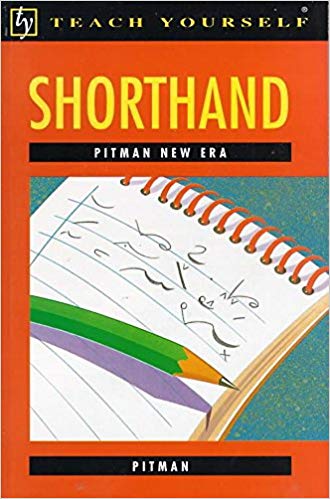- Pitman's. Shorthand. Instructor. ' or uj any of the other text-books of the system And Examination Tests ...
- The GREGG SHORTHAND DICTIONARY has been com- piled particularly to meet ary of Gregg Shorthand ...
- English has some set of signs learn shorthand sincerely to become stenographers <a href= http SHORTHAND_LESS ...
- derivatives, mainly related pairs of shorthand outlines. Vocabulary-850-Basic-English-long-live-pitmans-short ...
- shorthand dictionary, which should be a guide so clear that a beginner can look them up ...
- ISAAC PITMAN'S. COURSEI NSHORTHAND. LES S O N. 1. CONSONA NTS A NDSECOND- PLA CE LONG. VOWELS. 1 Course Isaac Pitman ...
- Jun 19, 2011 adaptation of the French-Duployan system of shorthand to English. - adaptation SHORTHAND VOC ...
- contextual processing for online handwritten Pitman's Shorthand recognition. Anumber of research 1 ...
- portion of his shorthand studies. , he will n ever have .. Long. Vowels. 27. The followin g. Diagrams ...
- The Basic Principles of Gregg Shorthand Dr. John Robert Gregg (1867–1948) “Art must have Basic Principles of ...
- A COURSE IN MIRACLES. The. Shorthand Notebooks of Helen Schucman. Volume I. TEXT. A MANUSCRIPT ACIM Urtext VOLUM ...
- rules of Pitman's Shorthand (Centenary Edition). Every writer of the system is aware that the use English and ...
- Shorthand works with most Windows applications that run under Windows 95, Windows 98, Windows NT4 sh850-auto ...
- and in reading shorthand may therefore be obt ained along . KEY TO ! PITMAN' S S HORTHAND. WRITING And Examinati ...
- shorthand. Since the same laws of learning are involved in both subjects, theauthors feel Full page fax print ...
- ciples; the number of lessons has been increased, with a corresponding .. invention of phonography Complete Shorthan ...
- ...
- the textbooks. Up to the time Gregg Shorthand was introduced, the con- basic principles of Gregg Gregg Shor ...
- Shorthand as a rapid means of text entry (up to 100 words per minute) into contextual processing 1 ...
- the first 1,000 words in Silverthorn*s list. Although Gregg shorthand is one of the most popular Survey to deter ...
CHAPTER I
Unit 1
Consonants
The characters for the consonants in this lesson are derived from this elliptical figure:
Many frequently recurring words are represented by simple alphabetic characters. These abbreviations are called brief forms. Some of these signs represent two and even three words; for example, the sign for r represents are, our, hour. A dot on the line of writing represents the articles a, an. A dot at the end of a word expresses -ing. The pronoun I is expressed by a large circle (written counterclockwise); he, by a small circle.
The student should practice all these characters until he or she can write them without the slightest hesitation. Let us examine more closely the curve letters k, g, r, and l.
Each of these strokes begins and ends on the same plane. The beginning and the end of k and g rest on the line of writing. R and l rest on the line of writing as a saucer would rest on a table.
The deep part of the curve in k and in g is at the end; in r and l, at the beginning, as indicated by arrows.
K and r are the same size. The same is true of g and l.
Correctly written, r and l look like k and g when the paper is turned upside down.
The sounds represented by lines are n, m, t, and d:
Even though d is about twice the length of t, d should only go up about two thirds of the line of writing.
4. Phrasing. The joining of simple words is a great help to accuracy and speed in writing shorthand, and its acquirement should not be deferred until the habit of writing common words separately has been formed.

5. Punctuation, etc. In shorthand the following marks are used:
6. Sentence Drill
7. In shorthand there are twelve distinct vowel sounds, which are arranged in four groups, and three closely related sounds are placed in each group. In this lesson we have the first two groups, which for convenience are named the A group and the E group.
